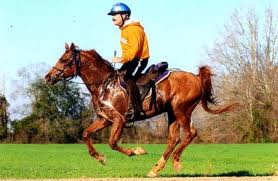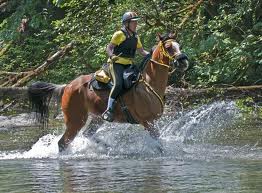|
Endurance Racing
Endurance riding is a controlled long-distance races. It is one of the international competitions recognized by the FEI. There are endurance rides worldwide. In an endurance ride, the winning horse is the first one to cross the finish line while stopping periodically to pass a veterinary check that deems the animal in good health and fit to continue.

In the United States and Canada, AERC sanctions over 700 rides a year. The distances range from 25 to 100 miles in one-day and two-day events and pioneer rides of three or more days of competition. Distances less than 50 miles are considered limited distance. There are also a few longer, usually multi-day, rides run as well. As with human marathon running, many riders will participate to improve their horse's personal best performance and consider finishing the distance with a proper vet completion record to be a "win". In the USA, the American Endurance Ride Conference (AERC) sanctions endurance rides. In the UK, Endurance GB is the governing body. Winning riders complete 100-mile (160 km) rides in 10-12 hours.
Return to Horse Riding Connection
|

